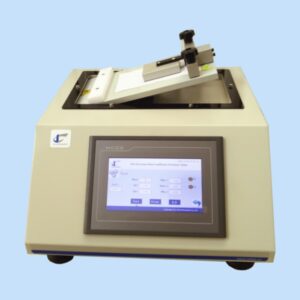TAPPI T548
Test Materials: TAPPI T548 specifies using a test specimen (such as paper or film) and a sled, typically made of stainless steel or aluminum, for coefficient of static friction testing.
Test Process: The sled is placed on the specimen, and a force is applied until the sled begins to move. The force required to initiate motion is measured to calculate the coefficient of static friction.
Test Result Interpretation: The coefficient indicates the frictional resistance between materials. A higher value shows greater resistance to sliding, essential for evaluating material compatibility and surface treatments.
Showing the single result

